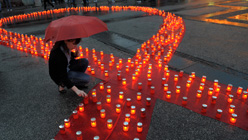In the early 1990s, I moved to the Castro. Until then, ensconced in my heterosexual bubble, as it were, I’d been only vaguely aware of the scourge of AIDS. But this new neighborhood — it felt haunted. Cadaverous men, leaning on canes, laboriously breathing from oxygen masks. The diners on Castro Street, offering 10 percent discounts to PWAs (Persons with AIDS, I discovered). At Cafe Flore on Noe and Market, people speaking in hushed tones about recently deceased partners and dwindling T-cells.

In the early ’90s, testing positive for HIV was, for a majority of those afflicted, a death sentence.
After an absence of a decade, I moved back to the Castro in 2004, finding that the atmosphere of despair had lifted considerably. My HIV-positive friend — an avid tennis player looking perpetually fit — was a prime example of how medical advances had changed the outlook for those living with the virus.
Sunday marks the 30th anniversary of a CDC report citing five cases in Los Angeles of men who had contracted pneumocystis carinii pneumonia. Later those cases were designated as human immunodeficiency virus, or HIV, which currently afflicts an estimated 34 million people around the world.
Today on KQED’s Forum radio show, host Dave Iverson and guests looked back on the last 30 years of AIDS science, medicine and prevention efforts, and a look forward to the best hopes of finding a cure. Some audio clips: